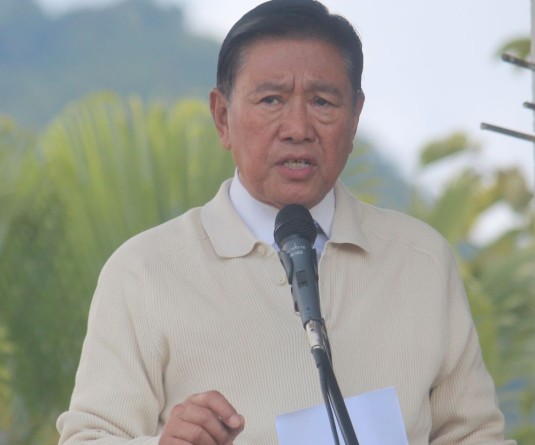Officials and participants during the ‘field day cum farmers’-scientist interaction programme on participatory rice seed production’ held at Singrijan village on October 28.
Dimapur, November 2 (MExN): A ‘field day cum farmers’-scientist interaction programme on participatory rice seed production’ was organized at Singrijan village under Dimapur district by ICAR Nagaland Centre, Medziphema in collaboration with KVK, Dimapur on October 28.
The programme was held with the aim to show the performance of RCM-9 variety in rice seed production fields and scope of participatory rice seed production in Nagaland.
A press release from Joint Director, ICAR Nagaland Centre stated that, quality planting material is the most important and critical input for successful agriculture. In the state quality planting martial is not available on time to meet out the quality seed demand. Seed replacement ratio is below 15% in the state, which is very low, mainly due to reliance on informal seed system with traditional rice. Rice productivity of Nagaland is very low with a tune of 1.6 tonnes/hectare (GOI, 2018) as compared to national average of 2.7 tonnes/hectare due to use of traditional low yielding landraces and use of impure seeds of old HYVs.
“Therefore, by increasing the availability of quality seed material of HYVs on time will increase the production and productivity of the state to achieve self-sustenance in rice production,” he added.
Dr Harendra Verma, scientist, Plant Breeding and Genetics, ICAR Nagaland Centre, Jharnapani welcomed the farmers and congratulated them for their hard work and discussed the future prospects and know-how on participatory rice seed production. He also advised and encouraged the farmers to take up quality seed production to meet local seed demand timely.
Dr Roben Singh, SMS, KVK, Dimapur also emphasized on use of early and medium duration HYVs of rice (RCM-9) to utilize the residual moisture and to enhance the cropping intensity. As RCM-9 is medium duration variety (125-130 days) so that farmers can harvest it by end of October and in rabi season farmers can be easily taken up various crops such as toria, mustard, pea, linseed, any vegetables crops etc. to enhance the farm income.
A progressive farmer of Singrijan village gave a brief feedback on the performance of RCM-9 rice variety. Farmers were very happy after seeing the performance of RCM-9 variety in fields and were ready to cultivate in future also.
At the end of programme, seed of improved toria variety “TS-67” was distributed to the 25 farmers of Singrijan village for toria seed production.
A farmer-scientist interaction was also conducted in which queries related to pest and nutrient management of rice and toria was discussed. A total of 38 farmers participated in the programme.




